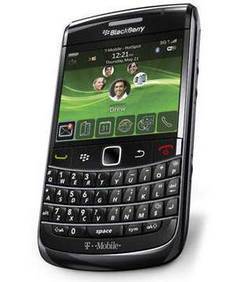 With RIM's interim BlackBerry 7 handsets out in the wild, attention has shifted to the real subject of a potential BlackBerry renaissance: the upcoming QNX BlackBerrys, phones built on RIM's new platform for the 2010s. Boy Genius Report (BGR) says the first devices are coming out early next year, which jibes with what I've been hearing for the past several months.
With RIM's interim BlackBerry 7 handsets out in the wild, attention has shifted to the real subject of a potential BlackBerry renaissance: the upcoming QNX BlackBerrys, phones built on RIM's new platform for the 2010s. Boy Genius Report (BGR) says the first devices are coming out early next year, which jibes with what I've been hearing for the past several months.RIM's U.S. market share is declining, but there are still plenty of things people like about BlackBerrys: their great keyboards, their enterprise manageability and security, and their focus on messaging, for instance. And the QNX OS in the BlackBerry PlayBook has promise, although it fell down at launch because of missing features and trouble with things like memory management.
The mobile market is always in flux, and it's always ready to be disrupted. If BGR's "BlackBerry Colt" (which won't be called that, don't worry) comes out early next year with some of these features and points, RIM could very well rise again. Here are some things I think it needs to do so.
No more menu, scroll, select. Kill the 1990s-era BlackBerry UI metaphors designed for non-touchscreen devices with clickwheels. Fortunately, RIM has already done that on the PlayBook. It just needs to carry the PlayBook's excellent usability over to phones.
BBM, BES, and ActiveSync out of the box. BGR says the first new phones won't support BlackBerry Enterprise Server, the backbone of corporate BlackBerry installations which makes BlackBerry phones so delightfully IT-manageable. This would be a mistake. While it's great that consumer and "rogue user" BlackBerrys are getting ActiveSync, BES is a core RIM strength and needs to be available on the company's flagship phone.
A world-leading Web experience. RIM's purchase of Torch Mobile gave it a modern, WebKit-based browser that we've seen put to good use on the BlackBerry PlayBook. Carrying that excellent browser over to phones will eradicate the BlackBerry's reputation for being behind the competition when it comes to the Web.
Release them on multiple carriers. Releasing a phone on multiple carriers lets enterprise customers bid carriers against each other or use a preferred carrier, which is a big deal for IT departments. For consumers, it lets them switch over to a new platform without having to break contracts or disrupt existing family plans.
Make them affordable. I've heard rumors that some of the BlackBerry 7 phones will launch at $299 with contract. Nonsense. When you're behind, you don't price yourself higher than your leading competitors. RIM needs to get carriers to charge the same for QNX BlackBerries as they do for high-end Android and iOS phones: $199.
Sell to enterprise first. RIM's most faithful and loving customers are in big businesses, and they praise BlackBerry's reliability and efficacy. RIM should get the new phones into some large businesses rather than spending all of its time flailing at a very difficult consumer market.
Release a finished product. The PlayBook came out with too many "coming soon" aspects: native email, 4G support, video chat. RIM is filling in those gaps as time goes on, but the company doesn't need more negative press when a new product launches. The mood at launch gives a product momentum. RIM needs to make sure all the pieces are in place when the QNX phone comes out.
Don't obsess about the processor; obsess about the experience. There's been some hand-wringing over whether or not the first QNX phones will have dual-core processors. But the cores aren't the issue; smooth performance is the issue. If RIM can program a smooth QNX experience, the number of cores shouldn't matter.

No comments:
Post a Comment